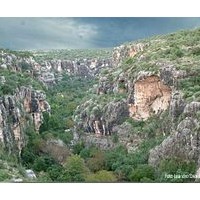Home - In and around
ISPICA RAGUSA
Ispica is a town of approximately 16,000 free Italian municipal consortium AB.
Ragusa is located on the southeast coast of Sicily and Modica, Pozzallo, Pachino, Rosolini and Known (the latter three in the province of Syracuse).
Ispica has a XVIII century, after the earthquake, with a quarter-turn road to wide streets and straight, and a medieval structure with irregular paths; the latter is adjacent to a cliff where lie the ruins of a fortress (fortilitium) and of the ancient city of Spaccaforno.
Thanks to its beautiful Ispica aspires to be part of the late Baroque towns of the Val di Noto; in fact you are added together with the municipalities of Mazarin and Acireale.
At Christmas a Nativity scene at the Cava d'ispica force Park that attracts visitors from all over eastern Sicily. There are represented the ancient crafts:
Scarparu Cannizzaru Tissituri Carrittieri Uttaru-Cufinaru-Curdaru-Raricciaturi----MietituriRicamatrici-Sigghiaru-Lantirnaru-Sapunaru-Genovese--Zimmilaru-Ferra cavaddi-Falignami
La Cava Ispica is a deep valley carved out by water erosion 13 km long stretches in the municipalities of Ispica, Modica and Rosolini. There are a number of cave dwellings and was inhabited from prehistoric times to the nineteenth century.
Archeologico Situato Park at the outlet in lower Southeast Cava Ispica returned traces of occupation from the early Bronze age (pottery unearthed at the current entrance).
The Antiquarium of the Park houses exhibits between the first half of the bronze and the 1693.Il Park can be reached by means of a rock-cut-down ("one hundred steps") from Cava Ispica, along which there are visible traces of Byzantine frescoes and the tombs.
source wikipedia
Ragusa is located on the southeast coast of Sicily and Modica, Pozzallo, Pachino, Rosolini and Known (the latter three in the province of Syracuse).
Ispica has a XVIII century, after the earthquake, with a quarter-turn road to wide streets and straight, and a medieval structure with irregular paths; the latter is adjacent to a cliff where lie the ruins of a fortress (fortilitium) and of the ancient city of Spaccaforno.
Thanks to its beautiful Ispica aspires to be part of the late Baroque towns of the Val di Noto; in fact you are added together with the municipalities of Mazarin and Acireale.
At Christmas a Nativity scene at the Cava d'ispica force Park that attracts visitors from all over eastern Sicily. There are represented the ancient crafts:
Scarparu Cannizzaru Tissituri Carrittieri Uttaru-Cufinaru-Curdaru-Raricciaturi----MietituriRicamatrici-Sigghiaru-Lantirnaru-Sapunaru-Genovese--Zimmilaru-Ferra cavaddi-Falignami
La Cava Ispica is a deep valley carved out by water erosion 13 km long stretches in the municipalities of Ispica, Modica and Rosolini. There are a number of cave dwellings and was inhabited from prehistoric times to the nineteenth century.
Archeologico Situato Park at the outlet in lower Southeast Cava Ispica returned traces of occupation from the early Bronze age (pottery unearthed at the current entrance).
The Antiquarium of the Park houses exhibits between the first half of the bronze and the 1693.Il Park can be reached by means of a rock-cut-down ("one hundred steps") from Cava Ispica, along which there are visible traces of Byzantine frescoes and the tombs.
source wikipedia



